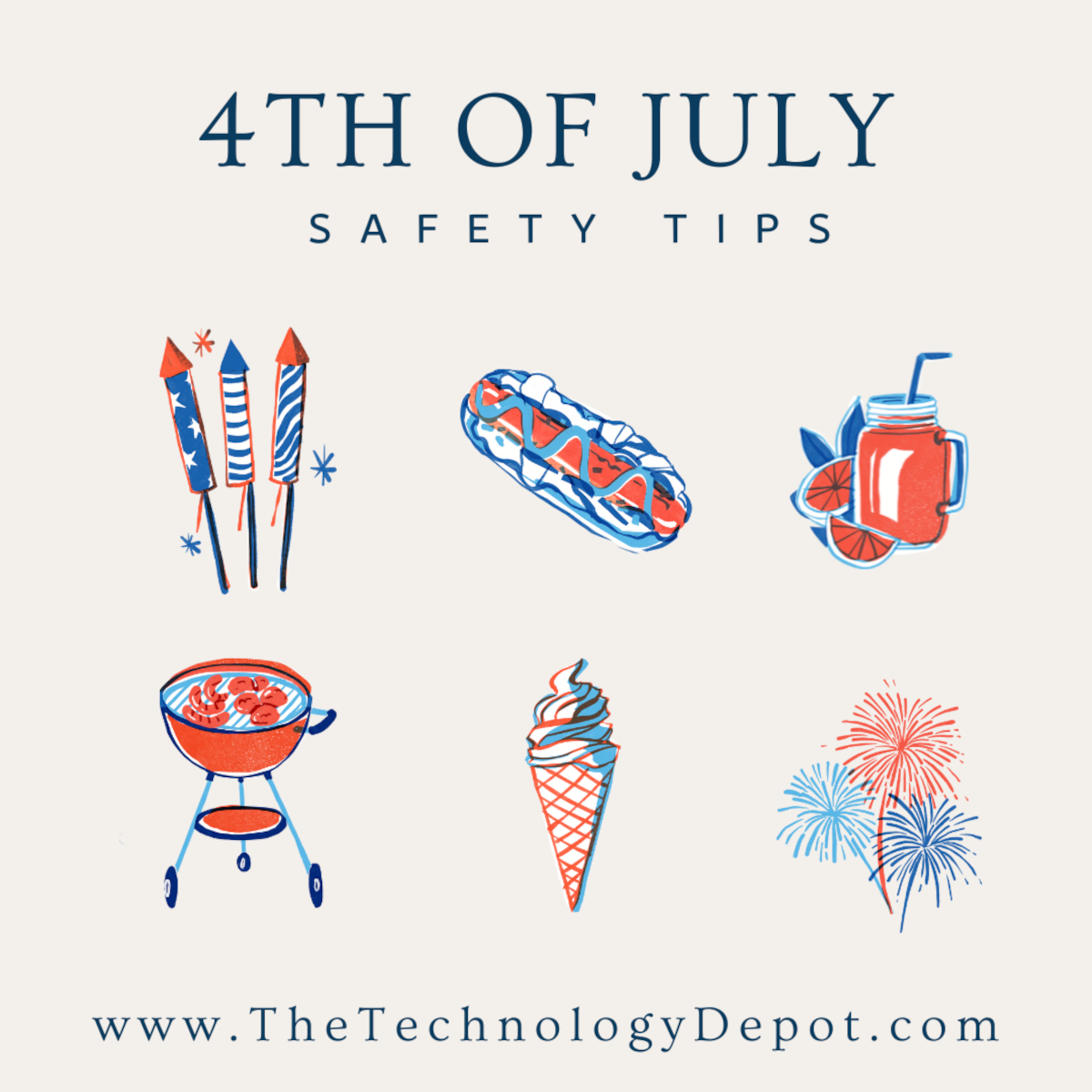4th of July Safety Tips from The Technology Depot
June 28th, 2024 by admin

The Fourth of July is filled with picnics, fireworks, family, and fun! Following are some tips on how to keep everyone in your family safe during this holiday.
- Never leave your kids alone with sparklers. Sparklers are fun and are usually thought of as kid safe. However, it is possible to get burned by the tip. Sparklers burn hot enough to melt gold and account for ten percent of all firework related injuries.
- Light fireworks away from people. You never know if they are going to backfire or go in an unexpected direction. It is also a good idea to have a water source nearby in case there is an accident that needs to be put out.
- Sunscreen. Apply and reapply all throughout the day. Sunscreen should be reapplied at least every two hours. The American Academy of Dermatology recommends an SPF of 30 or higher.
- Pick a meeting spot. If you are going to a crowded event with the family to celebrate the Fourth, pick a spot to meet up in the event you get separated.
- Have a lifeguard. Swimming is a popular activity with the kids on the Fourth of July. Any time children are in water there should be a designated adult supervising them.
- Keep your pets safe and secure. Loud fireworks are often frightening to pets, which may result in them running away. It is best to leave pets at home in a safe and escape-proof room or crate.
- Don’t drink and drive. Fourth of July is one of the deadliest days to be driving. Be alert and sober, if you are driving.
- Avoid choking hazards. Grilling and the Fourth of July go hand in hand, and hot dogs are a favorite. However, hotdogs are the top cause of food-related choking in children under the age of three, and one child in the United States dies from choking every five days. In addition, choking is the leading cause of accidental deaths in persons over the age of 65. When it comes to choking, prevention is always better than cure. The four S’s of choking prevention:
- Shapes of foods: Cutting up foods into developmentally appropriate size shapes (round cut into quarters, cylindrical into sticks). Be mindful of foods such as popcorn, marshmallows, hard sweets, nuts.
- Sit Down to eat: The risk of choking increases if someone is running around with food or other objects in their mouth. Sitting down together to eat meals not only reduces choking risk, yet is a great bonding too.
- Supervise when eating: Its tempting to “get things done” while kids are eating choking can be silent. Always keep in line of sight when they are eating so you can be aware and intervene quickly. Encourage to slow down, take small bites.
- Search your home: Anything that can fit through a cardboard toilet paper tube is a choking risk for young children. Get down onto your hands and knees and crawl around your house. Common household objects such as coins, erasers, button batteries, hair clips, marbles, bouncy balls, beads and small toy parts are all choking hazards and should be kept out of reach.
How else can we be prepared? We suggest having a LifeVac at home and in your car.
- Protect your child – To date, LifeVac has saved 2,417 total lives with 1,505 being children
- One kit protects the entire family
- Can you physically save your loved one using the Heimlich maneuver? Are you strong enough? LifeVac can be used on someone disabled, pregnant or large in stature
- Use on yourself if you live alone, or with young children too young to assist.
Follow this link to watch the lifesaving video of the El Monte Police Department saving an 8 year old boy choking on a hard candy while playing with friends.
Be sure it is only the original LifeVac that has the US Patent, FDA and MHRA Registered.
Posted in: News
